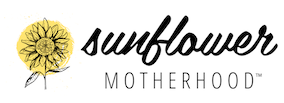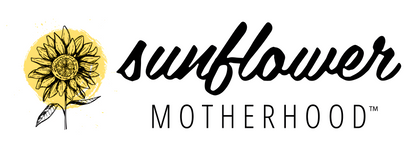As the miracle of new life unfolds, we're here to help you navigate the process of writing a birth plan.
Writing a birth plan is more than just drafting a document; it's a roadmap that reflects your desires, respects your choices, and ensures a nurturing environment for you and your baby.
10 Tips to Consider
Here are some things you might consider including in your birth plan:
1. Personal Information:
Be sure to include the names and contact information of those you wish to be involved in your labor and delivery process. It can also be helpful to include your medical history, partner's name, emergency contact information, and any other relevant details.
2. Birthing Environment:
Whether you plan to give birth at home, the hospital, or a birthing center, be sure to outline your labor and delivery preferences for the birthing environment, such as dimmed lights, music, aromatherapy, or any specific comfort measures.
3. Labor and Delivery Preferences:
Labor and delivery can be intense, and there are various pain management techniques available to help you cope with the discomfort. It's a good idea to explore different methods and create a plan that aligns with your preferences and needs.
Being open to trying different options can be helpful in creating a positive birthing experience. Here are some pain management techniques to consider:
Slow, deep breathing: Inhale deeply through your nose, expand your belly, and exhale slowly through your mouth. This can help you stay focused and manage contractions.
Patterned breathing: This involves establishing a breathing pattern that matches the rhythm of your contractions.
Gentle massage from a partner or a doula can help reduce tension and provide comfort.
- Acupressure and Reflexology:
Applying pressure to specific points on the body can promote relaxation and potentially alleviate pain.
This technique involves using self-hypnosis, relaxation, and visualization to manage pain and reduce anxiety.
Bouncing on a birthing ball can help ease pressure and encourage optimal fetal positioning.
Transcutaneous Electrical Nerve Stimulation (TENS) involves using a small device to deliver low-level electrical impulses to specific areas, which may help alleviate pain.
- Epidural or Spinal Block:
Medications administered by an anesthesiologist can provide effective pain relief, especially for more intense pain during labor.
Also known as "laughing gas," inhaling nitrous oxide can help reduce anxiety and discomfort during contractions.
4. Labor Positions:
Labor positions play a significant role in managing pain, promoting comfort, and facilitating the progress of labor. Each woman's body is unique, and finding the right positions that work for you can make a significant difference in your overall birthing experience. You can include a variety of possible positions in your labor and delivery preferences.
Here's a bit more information about some commonly preferred labor positions:
Squatting opens up the pelvic area and can help create more space for the baby to move through. This position uses gravity to your advantage and has the potential to help your baby advance more quickly. Squatting bars or supports are often available in birthing environments.
- Kneeling and Hands-and-Knees:
These positions can help ease back pain and encourage optimal positioning of the baby. Kneeling and being on hands and knees can also provide relief from the intensity of contractions, a major plus!
Lying on your side can be especially beneficial if you're looking for rest between contractions. This position is known to improve blood flow to the placenta and can help you relax.
One tool that can provide physical support and help with pain management during labor is arebozo. This traditional Mexican shawl acts as a sling to support some of your weight in various positions that open your pelvis and move your baby lower in the birth canal so you can conserve your energy
Using a water tub for labor, also known as water immersion or hydrotherapy, can offer relaxation and pain relief. The buoyancy of the water can reduce pressure on joints and muscles and create a calming environment.
It’s great to do research on your own, but don’t forget to discuss your options for labor positions with your healthcare provider and support team. Because they are familiar with your unique circumstances, such as the baby's position and your medical history, they can offer guidance and recommendations of what may work best for you and your baby.
During labor, you might find that certain positions feel more comfortable at different stages, and staying open to trying different options can help you find what works best for you. Remember, the goal is to find positions that promote comfort and help you in your birthing journey.
You may find that you need to try a few options before you find what’s best for you, and it is absolutely worth it. Don’t get discouraged – you were made for this.
5. Monitoring and Interventions:
Be sure to state your preferences forfetal monitoring andinterventions. Are you open to continuous monitoring, or would you prefer intermittent monitoring? How do you feel about interventions like episiotomy, vacuum extraction, or forceps delivery?
6. Cesarean Section:
As good as plans are, you may find that things don’t go the way you were anticipating they would. It’s possible that a Cesarean Section, or C-section, becomes an option that you need to consider. Remember that the top priority is both your own health and the health of your baby!
If a C-section becomes necessary, it's important to communicate your birth plan to ensure that the experience aligns as closely as possible with your desires and needs.
If you're having a C-section, you might have strong feelings about who should be present in the operating room with you. Some hospitals have limitations on the number of people allowed in an operating room, so it's good to check in advance.
There are different types of anesthesia during the labor and delivery process. Did you know that an epidural and a spinal block are not the same thing? Depending on your circumstances, one may be a better choice than another, so understanding and communicating what you would prefer can make a difference in your experience.
Some hospitals offer the option of using a clear drape or mirror during the cesarean section, allowing you to witness the birth of your baby. If this is something you're interested in, make sure to express this desire in your birth plan so healthcare professionals can do their best to make it happen.
- Immediate Skin-to-Skin Contact:
There are some instances where skin-to-skin contact after a C-section is delayed for the safety of you and your baby. However, you can request that you be able to hold your baby skin-to-skin as soon as it is safely possible.
While an operation room does have specific requirements, many hospitals will allow you to play calming music or incorporate things to make the atmosphere more comfortable as your baby enters the world.
- Photography or Video Recording:
If you'd like to capture the moment through photography or video, discuss the feasibility and any restrictions with your healthcare provider in advance.
It's important to remember that C-sections are often performed due to medical considerations, and your healthcare provider's primary goal is the safety and well-being of you and your baby. While expressing your preferences is valuable, remaining flexible is key, as some situations may arise that require quick decisions for medical reasons
.
7. Support People:
Some people value the support of many people during labor, and some prefer to only have their partner in the room. You can specify who you'd like to have present during labor and delivery, such as your partner, family members, or a doula.
8. Immediate Postpartum Preferences:
Some things need to be done immediately after birth, but there are some procedures, such as cord clamping, that can be delayed for a bit. Make sure to include in your birth plan your desire for skin-to-skin contact or any medical procedures you're comfortable with or would like to avoid immediately after birth.
9. Newborn Care:
Letting your healthcare provider know your plan forbreastfeeding, formula feeding, or a combination of both can help them better care for you and your newborn.
To keep your baby safe and healthy, there are some newborn procedures that happen soon after birth, such as vaccinations, eye ointment, andvitamin K administration. In your birth plan, you can decide which of these are right for your baby and when to administer them.
10. Special Requests:
Are there any special requests orcultural/traditional practices you'd like to incorporate during the birth and postpartum period? A birth plan is a great way to outline those.
Sunflower Motherhood Is Here To Support You
Whether you just found out you’re pregnant and you’re days away from welcoming your little one into the world, at Sunflower Motherhood, we understand the significance of these moments of motherhood and are happy to support you in your unique journey.
Our carefully curated products are designed to accompany you through all stages of motherhood, offering comfort, functionality, and a touch of joy and support. For loved ones seeking meaningful ways to support the mamas in their lives, Sunflower Motherhood offers an array of thoughtful gifts frompregnancy topostpartum that embody care and understanding.
Shop Sunflower Motherhood today to celebrate the strength, resilience, and boundless love that define the remarkable journey of bringing a new life into the world. 







